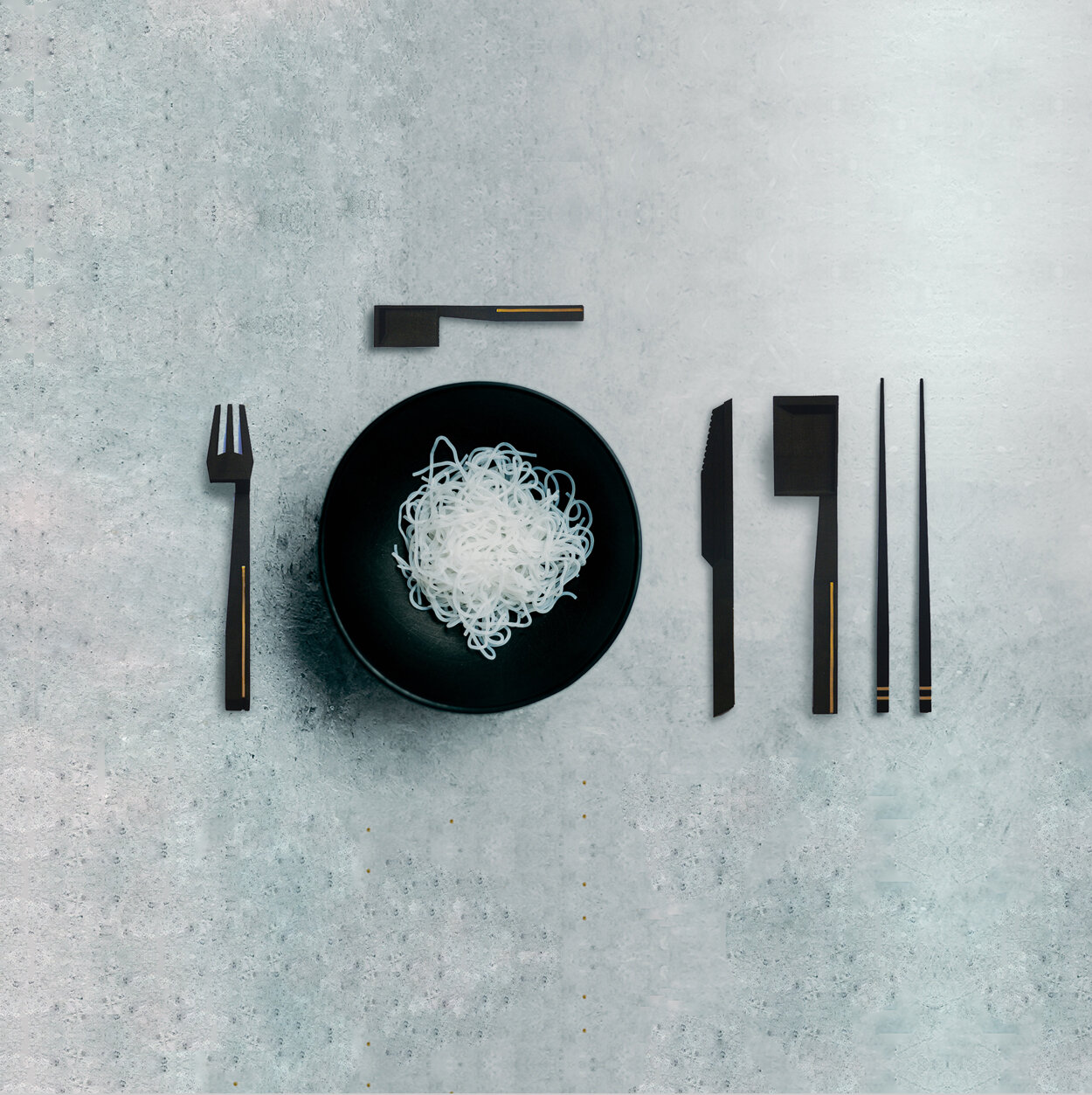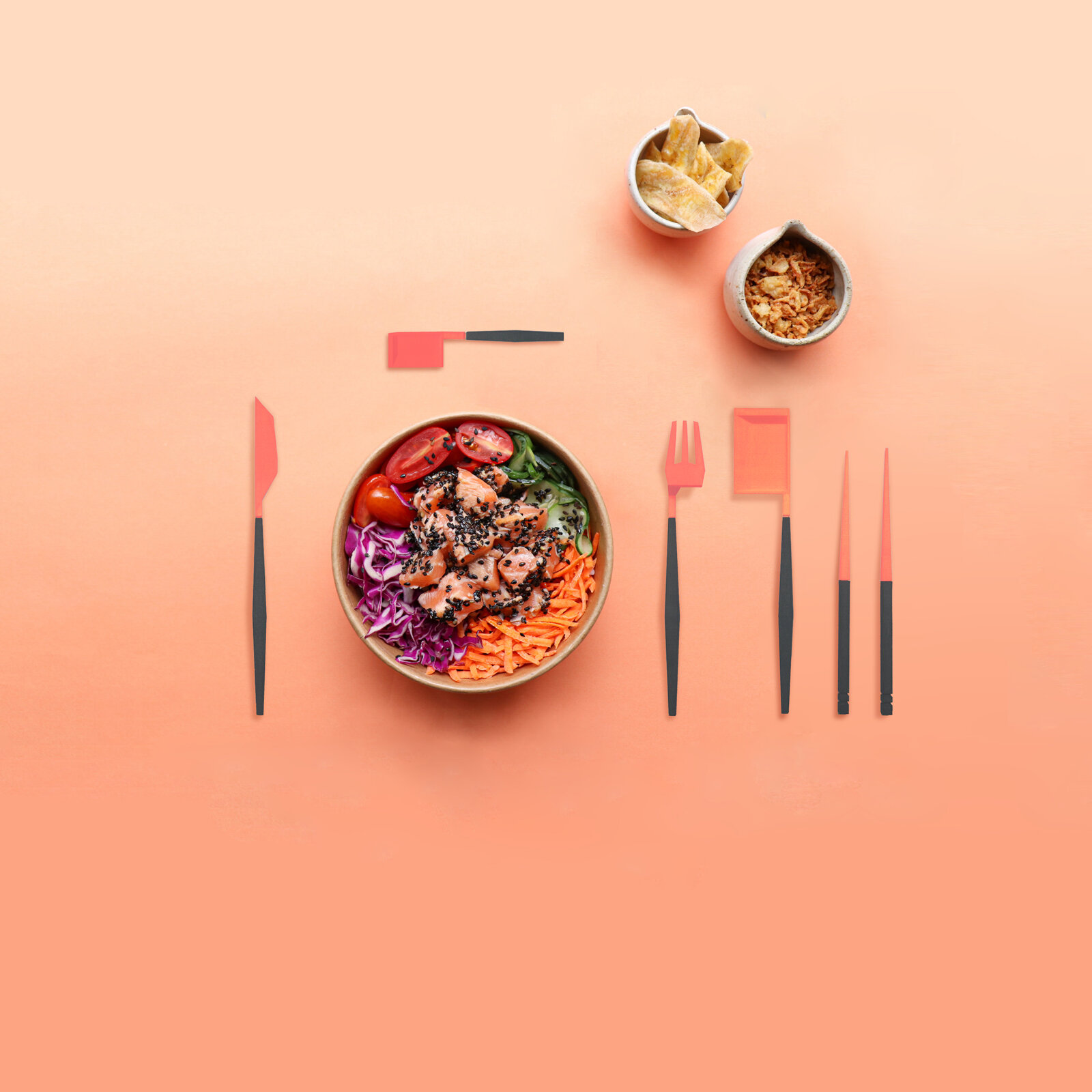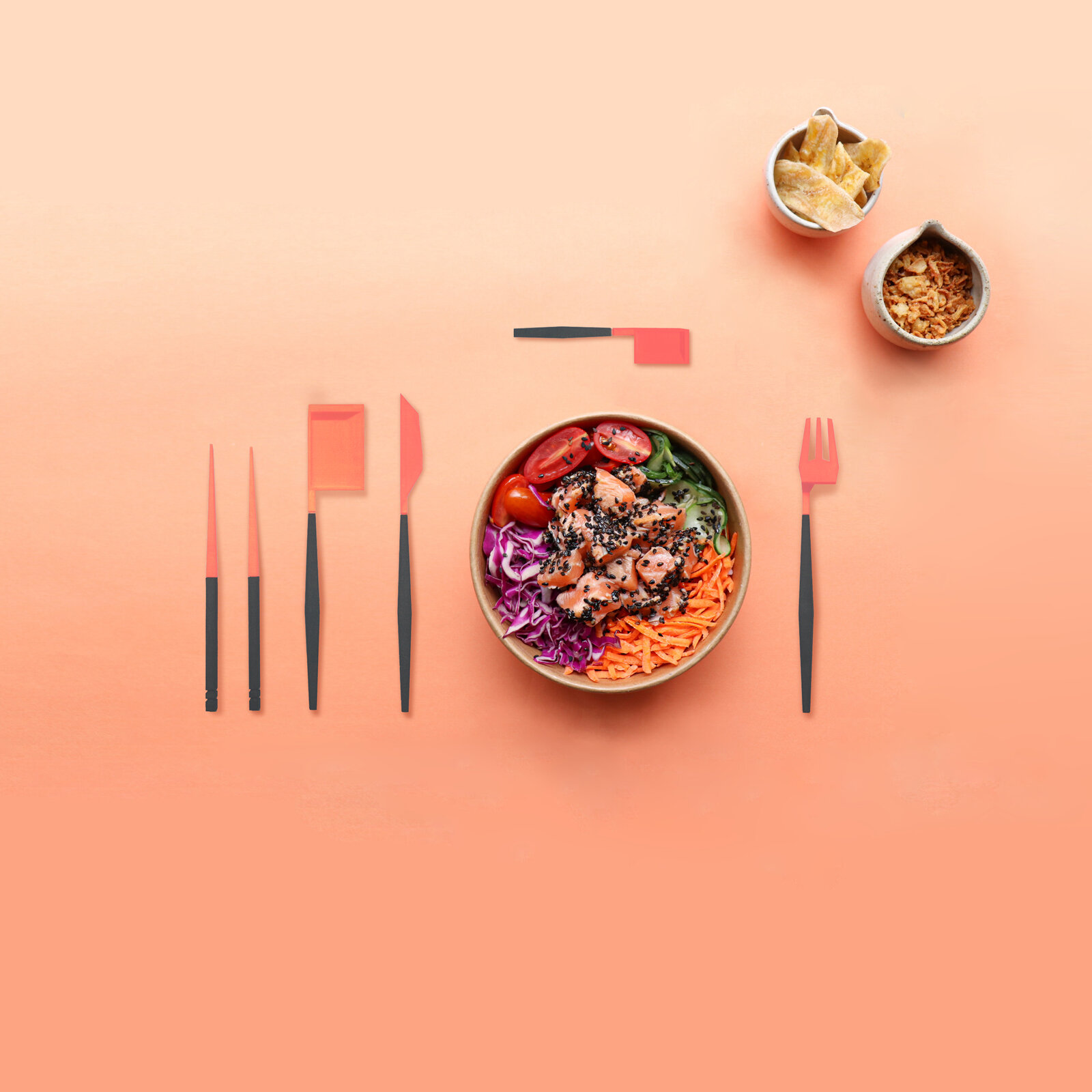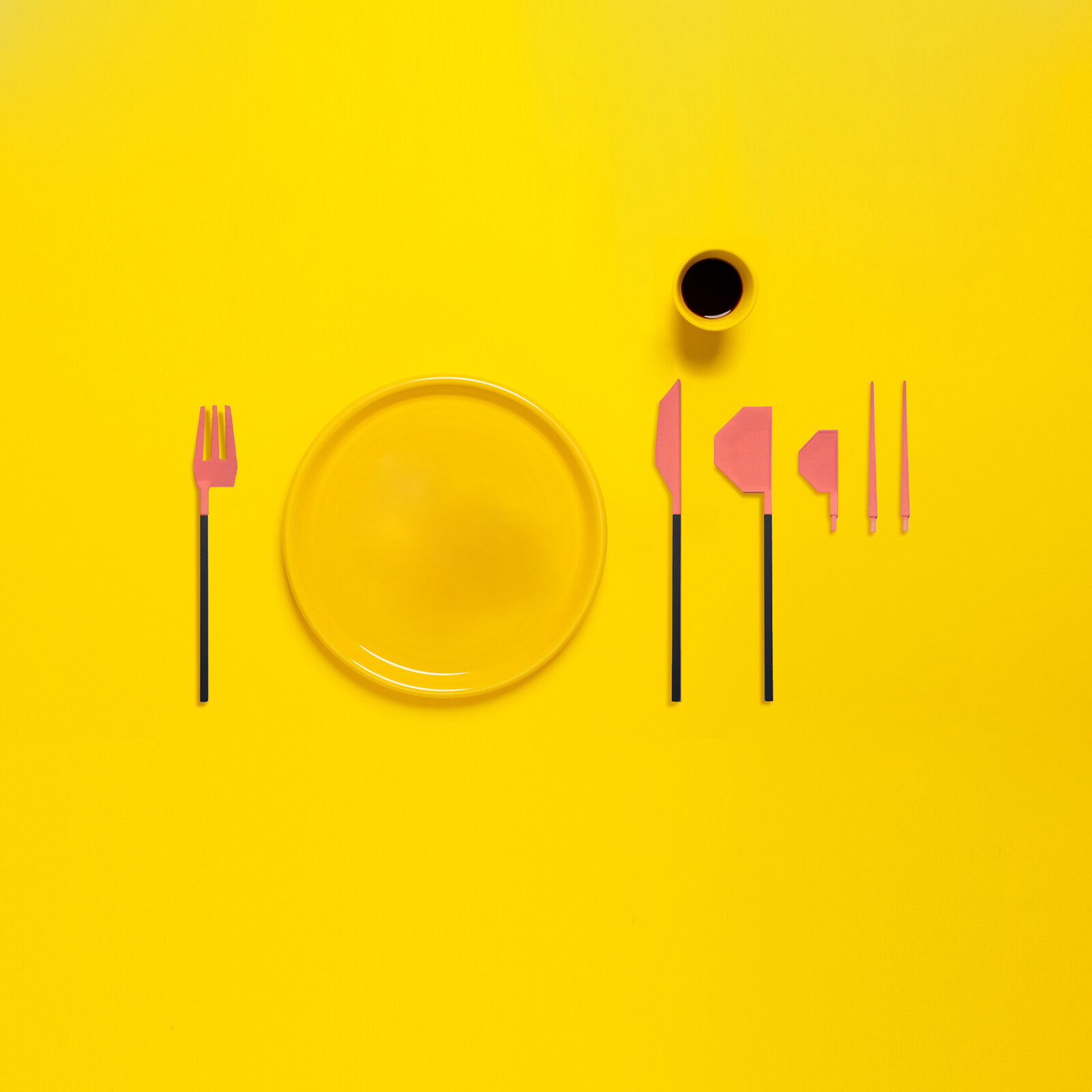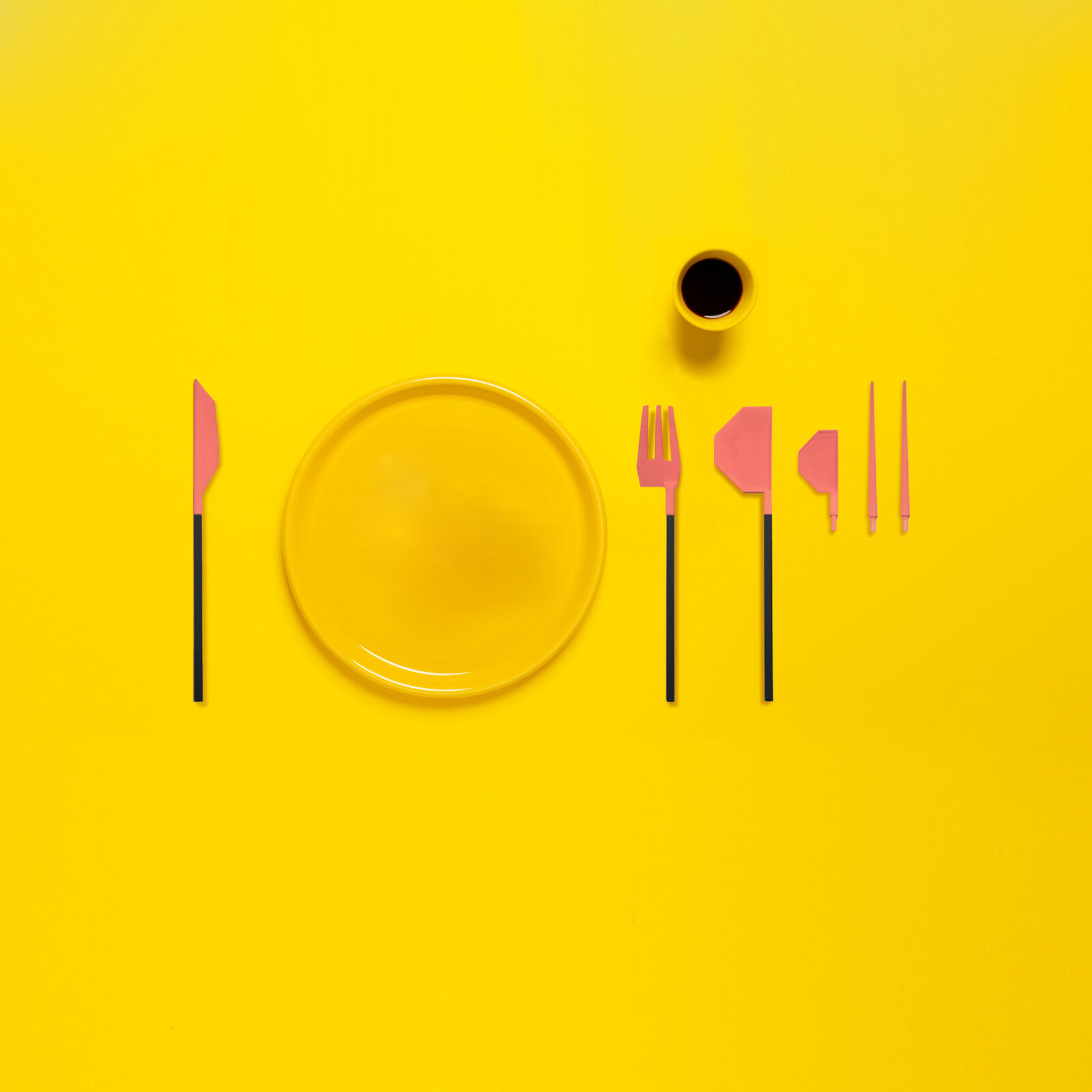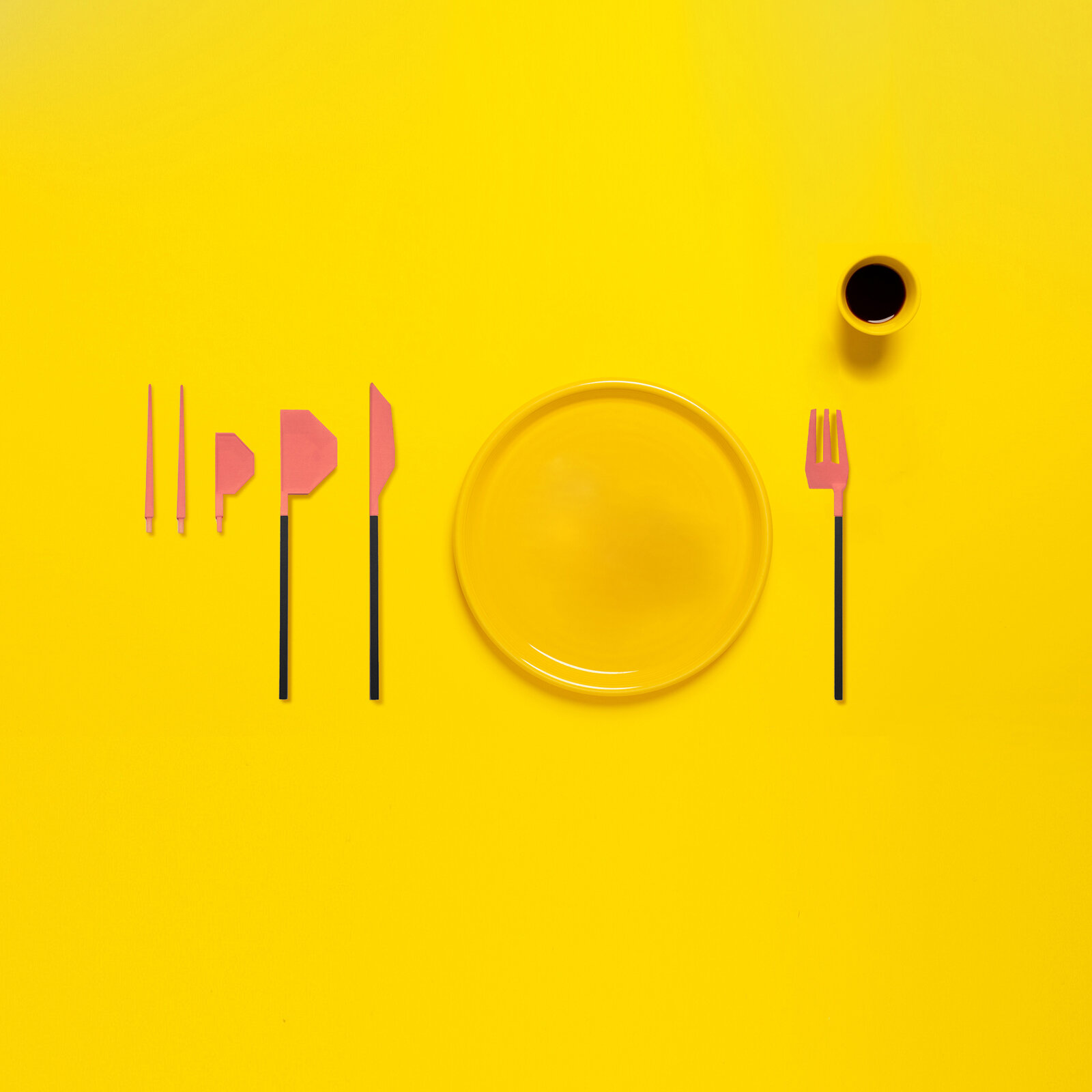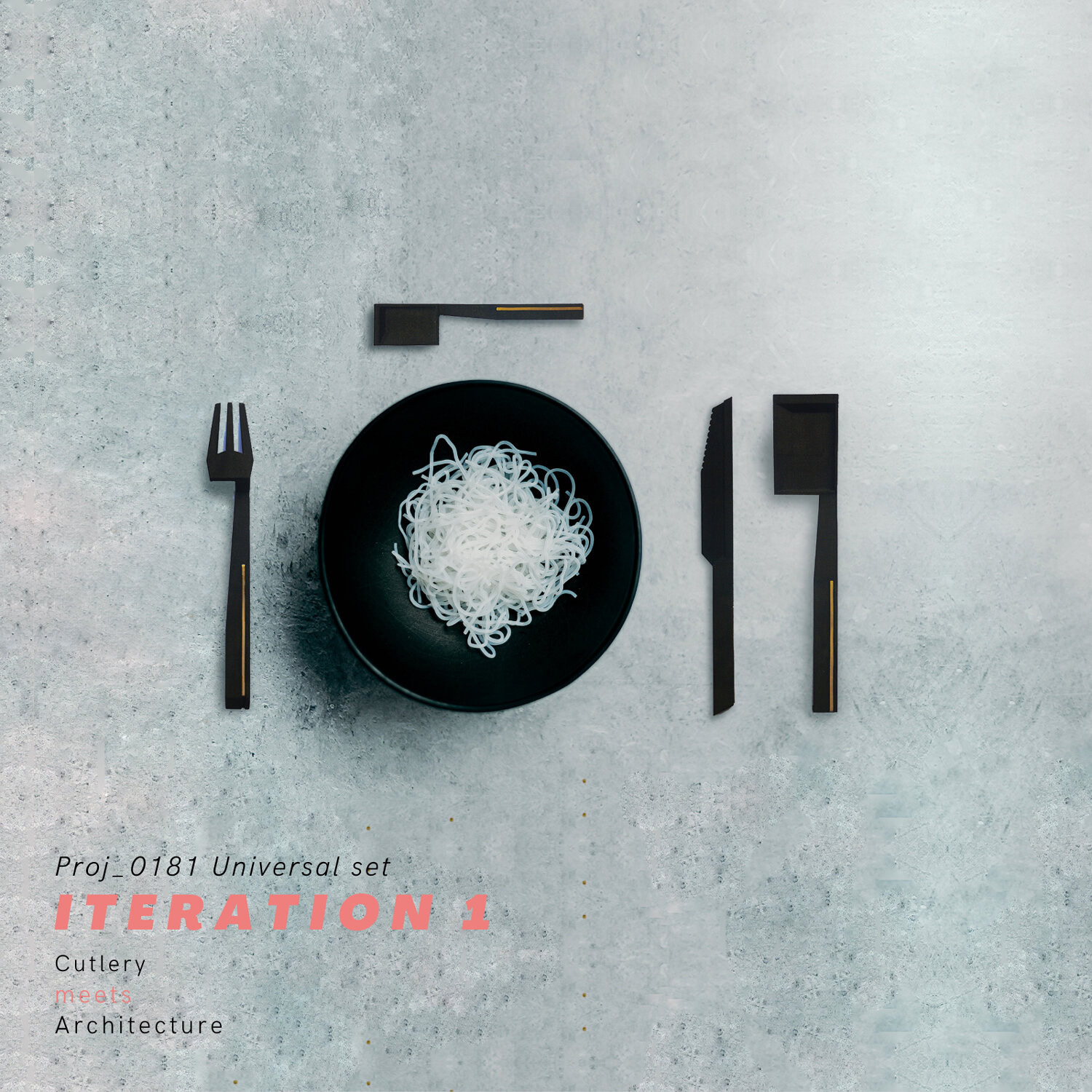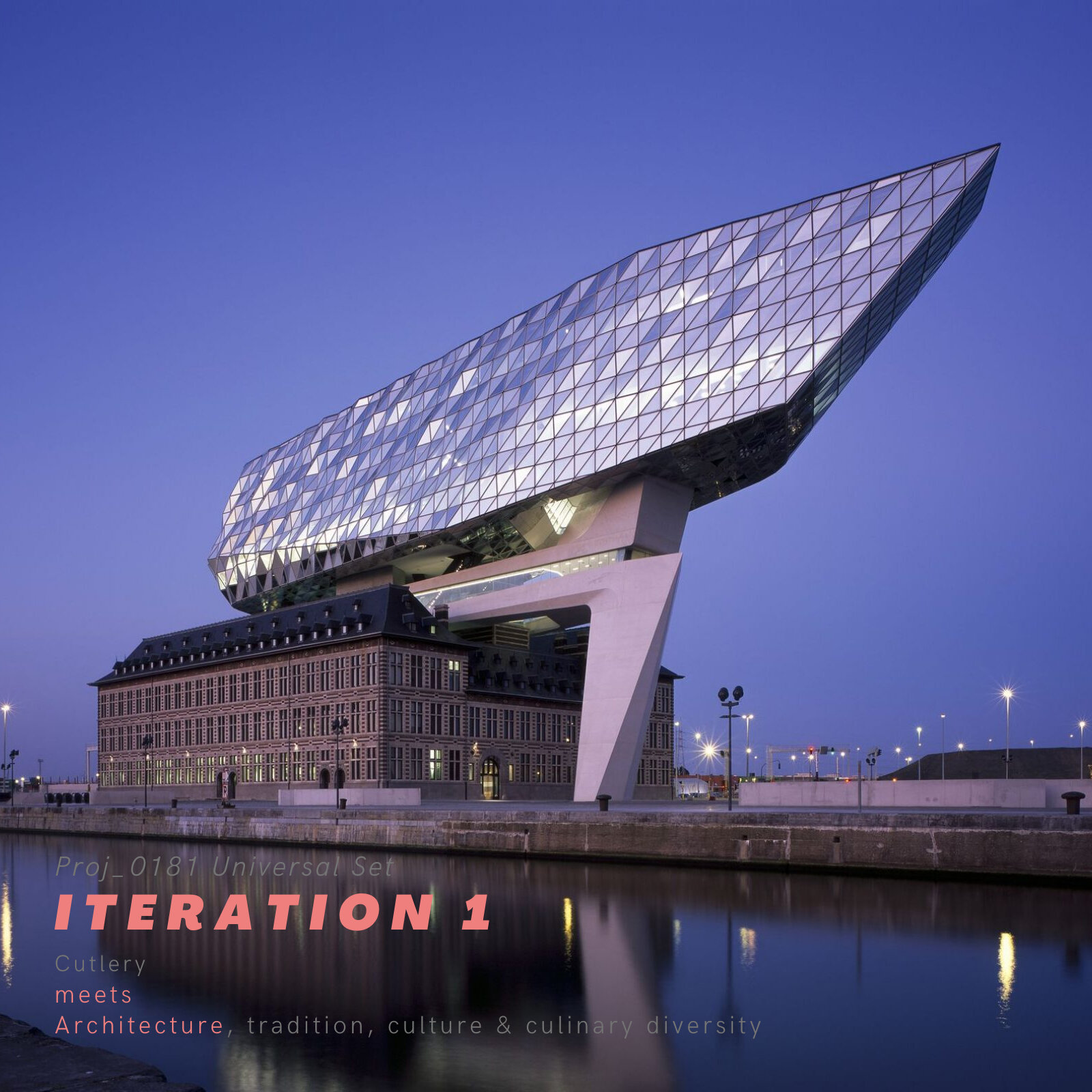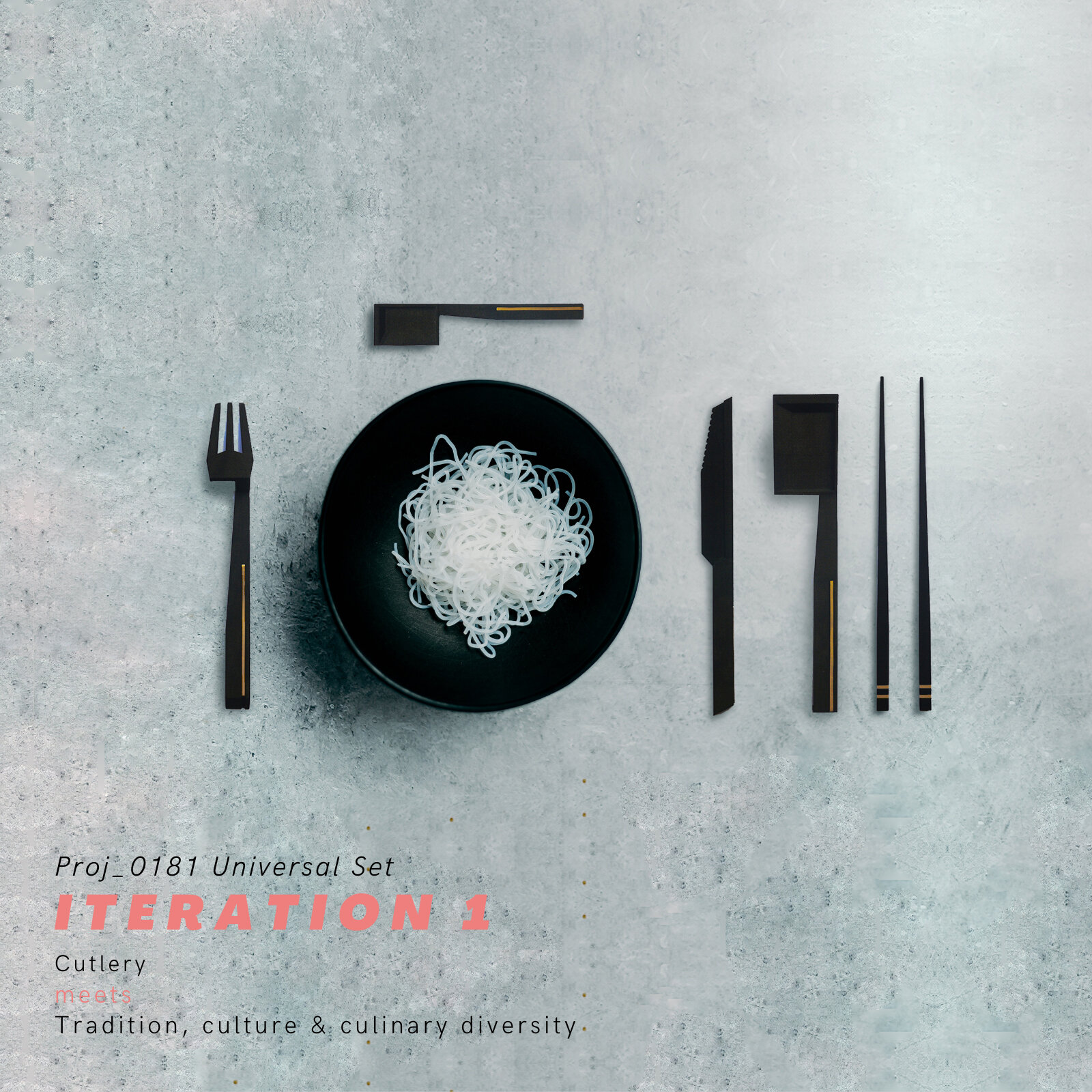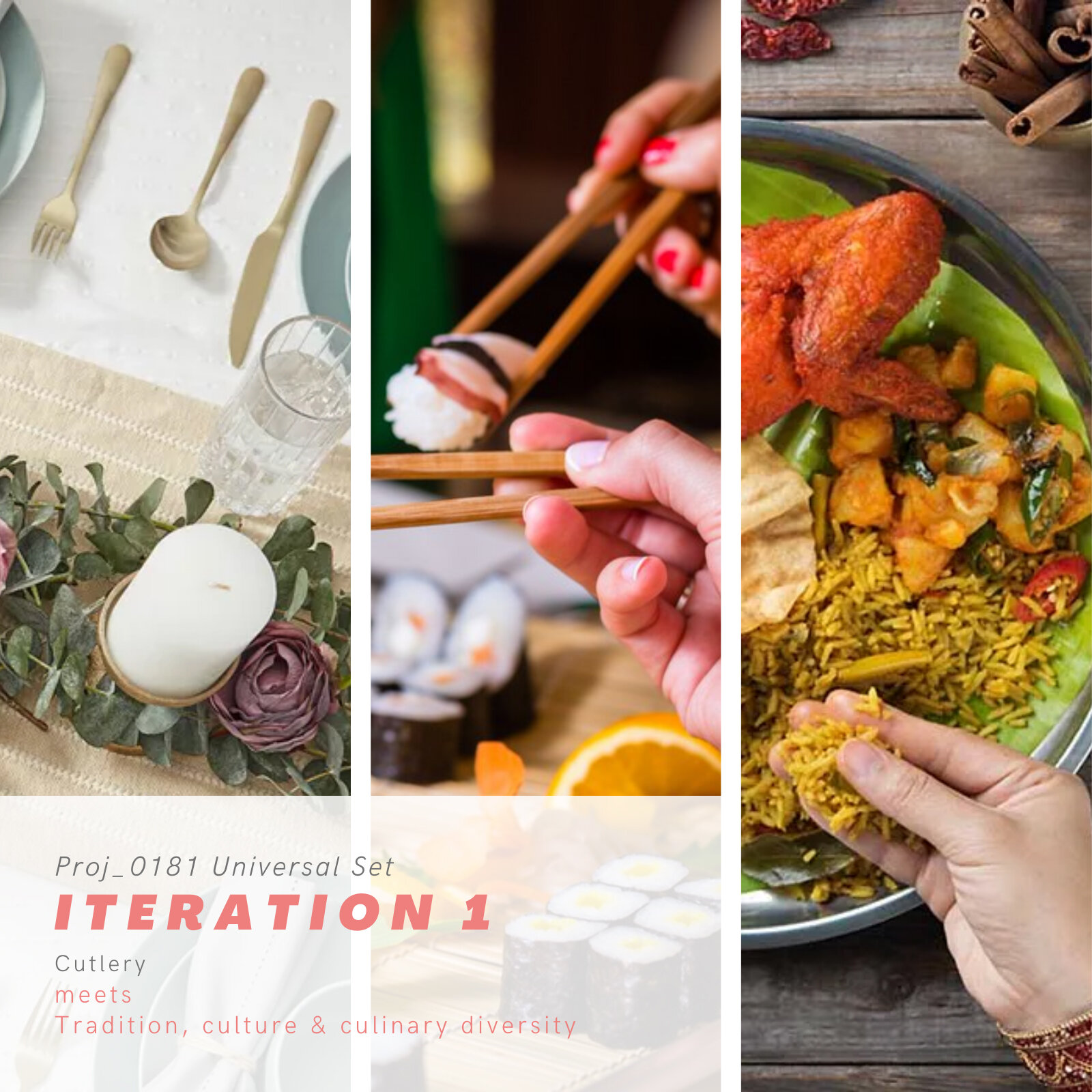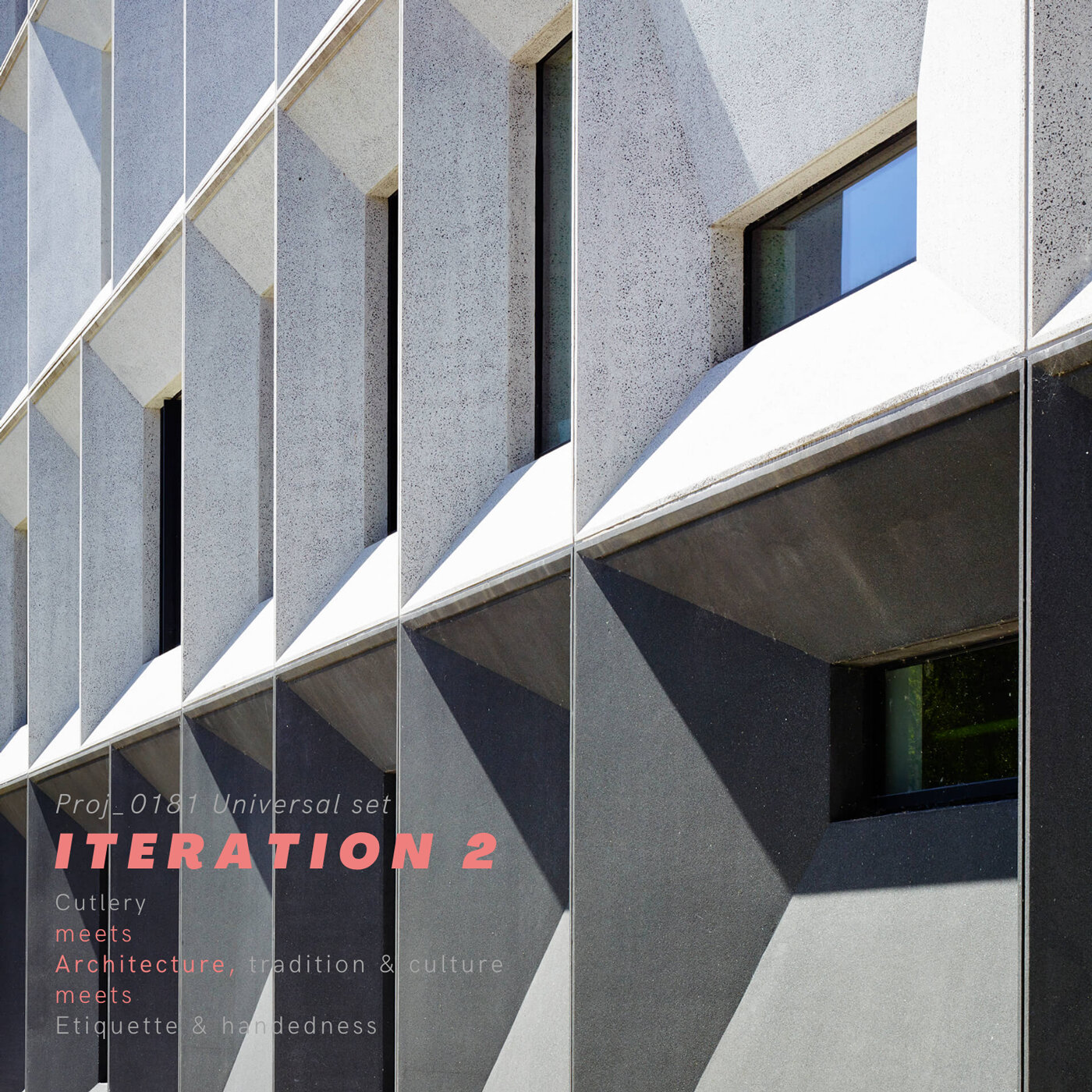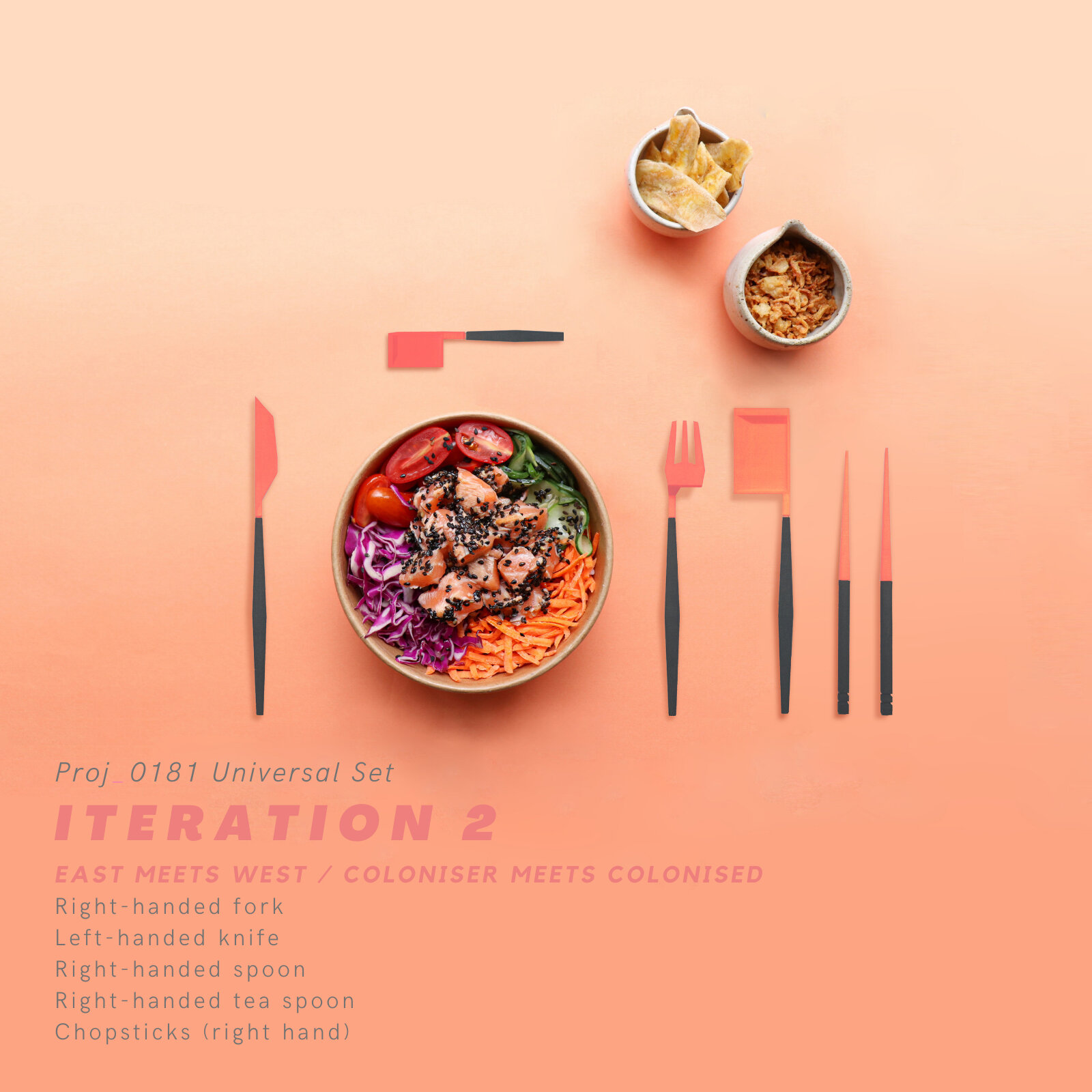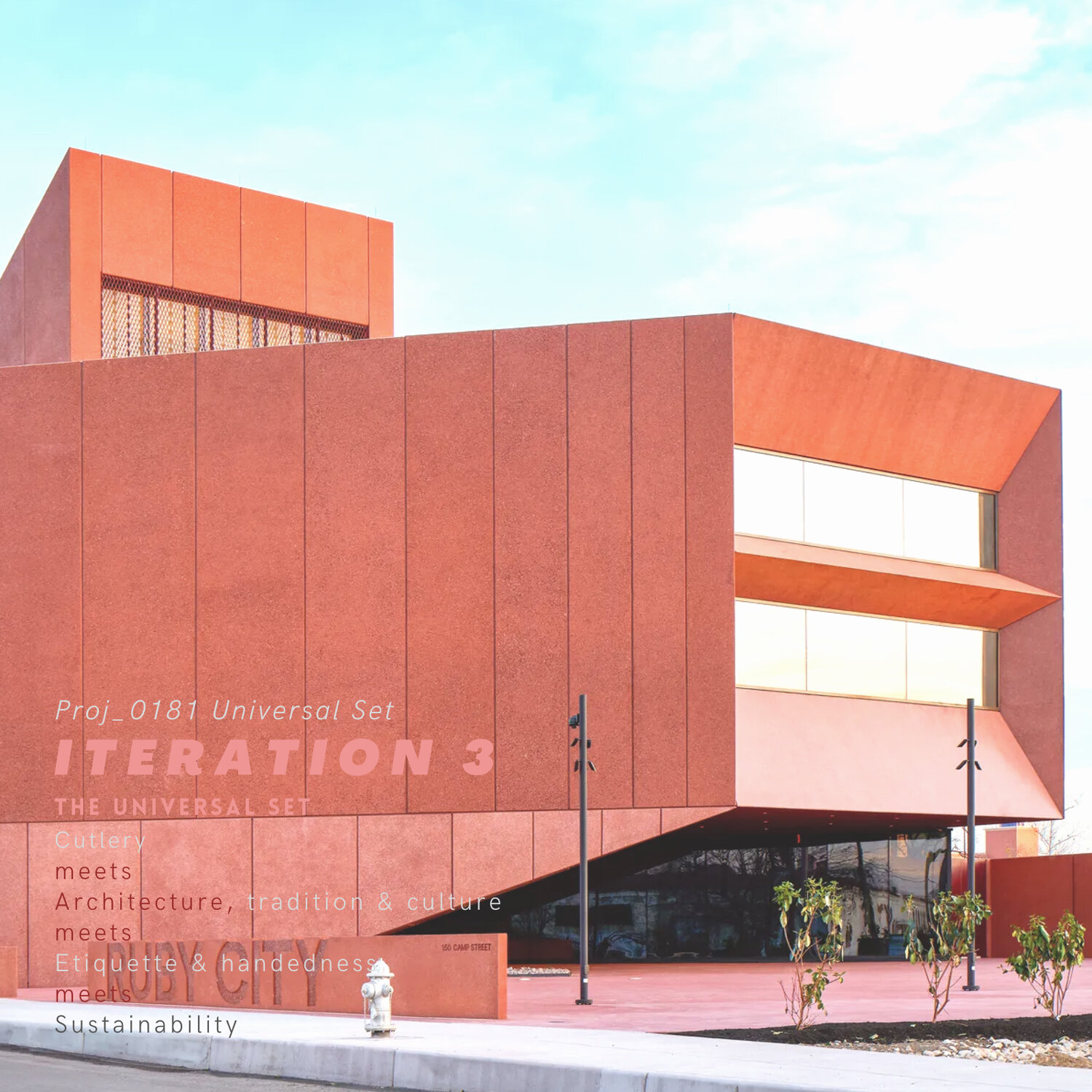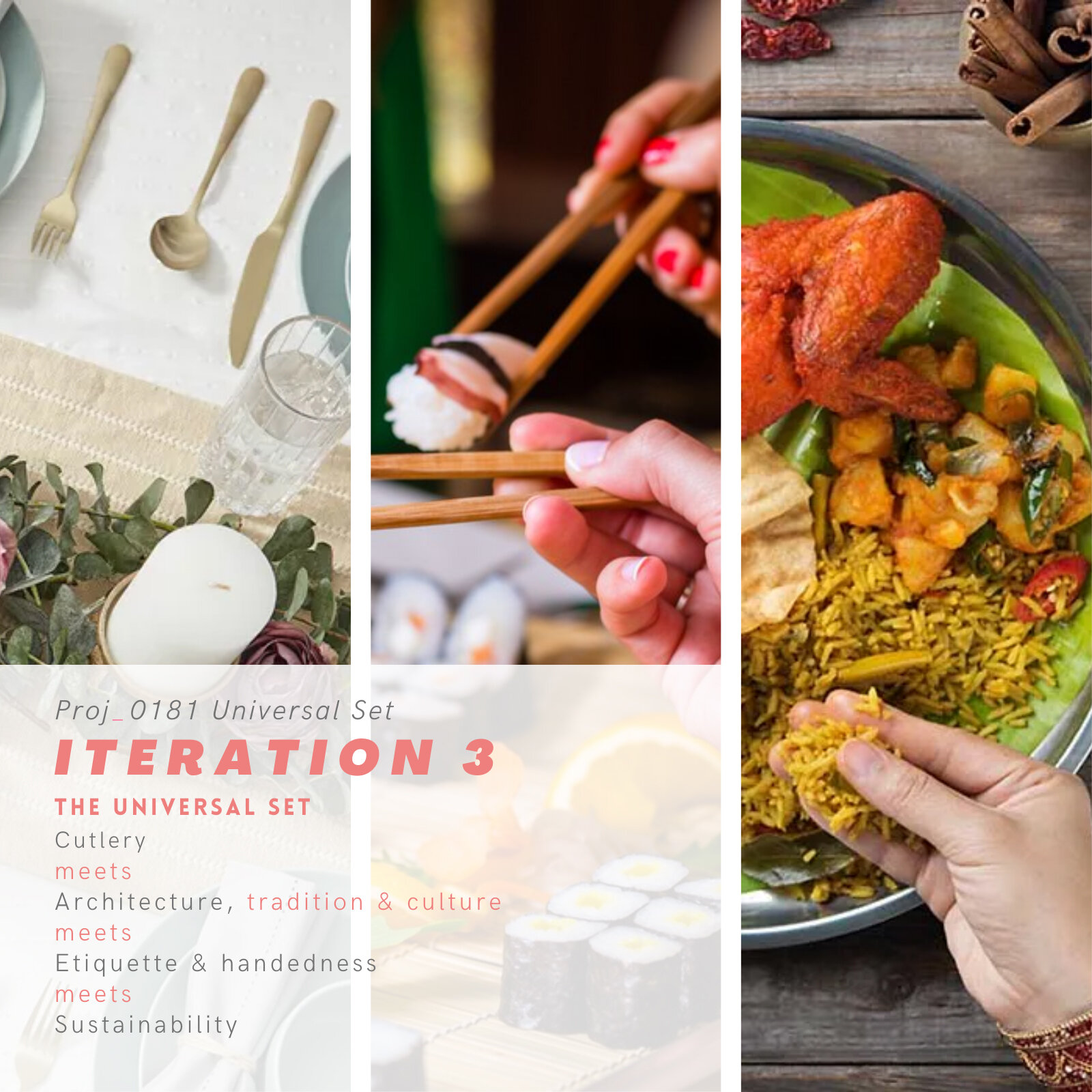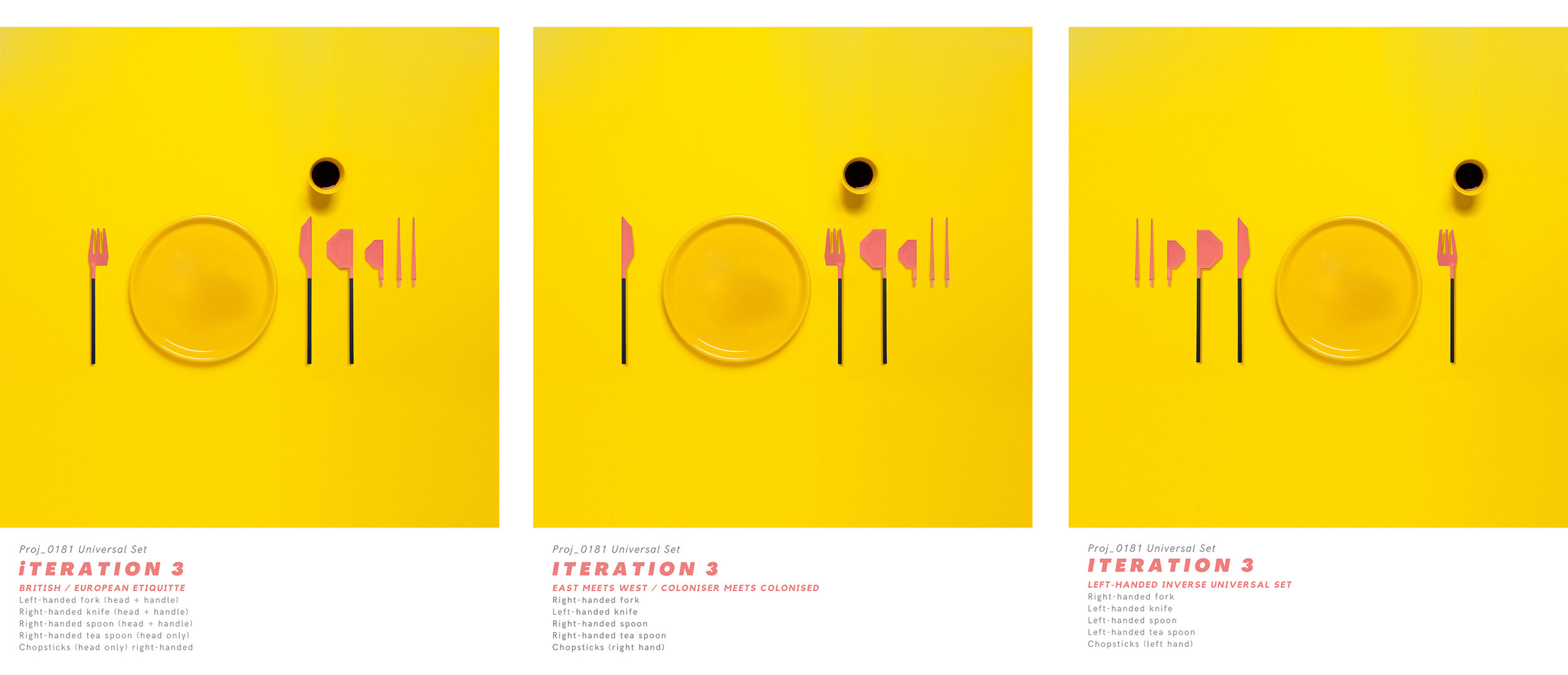0181 Universal Cutlery set
Intro
Cutlery
/
Meets
/
Architecture/form/tradition
/
Meets
/
Etiquette/handedness
/
Meets
/
Sustainability
What was originally intended to be a simple design exercise in form-making, morphed into a rather therapeutic journey into the mechanics/cultural norms of how and what we eat.
Our journey is part commentary/reflection on the culinary experiences & traditions of the 'other', whilst questioning what constitutes table manners/etiquette for a society increasingly adept at traversing between different cultural realities. We wanted to propose a set befitting the global, ethical consumer fully conscious of what, and how they consume.
We have distilled our areas of research & development into three key design iterations/narratives:
Iteration 1 - Cutlery meets Architecture & tradition.
Iteration 2 - Cutlery meets etiquette and handedness
Iteration 3 (final) - Cutlery meets Sustainability (plus iterations 1 & 2).
We 'd also like to apologise in advance to all seasoned cutlery designers for any misuse of terminology etc. Not our intention #humilityindesign
Iteration 1
Cutlery
/
Meets
/
Architecture/form/tradition
Before designing anything, we had to decide which utensil to include as part of our universal set. We never realised how hard it would be given the ridiculous number of utensils out there! However, what we were certain about was the need for the set to embrace other cultural traditions in order for it to be universal.
Our simplified universal set comprises of the following utensils embracing both eastern and western traditions:
1. Knife (or dinner knife)
2. Fork (or dinner fork)
3. Spoon (or soup spoon)
4. Tea spoon
5. Chopsticks
For iteration 1 we've taken the classical form of each utensil and applied our architectural appreciation of linear composition, symmetry, form and proportion to create a set without curves! Not all form follows function lol.
Shout out to those of us who are accustomed to using their hands/fingers. #notforgotten
Architecture & form making
Tradition, culture & culinary diversity
final design
Iteration 2
Cutlery
/
Meets
/
Architecture/form/tradition
/
Meets
/
Etiquette/handedness
Ever sat at a dining table/event and quickly switched the fork to your right hand thinking no-one will notice? Hush, hush we do it all the time too.
If the idea for this set was to create something universal, we quickly realised after our first iteration that we couldn't just perpetuate the status quo albeit with a fab new design. Our lived experiences of multiple culinary traditions dictated that we had no choice but to revisit and redefine what constitutes dining/table etiquette with utensils to match.
Two points of interest determined the trajectory of our second iteration.
Etiquette
For the western traditionalist, just the idea of switching hands is perverse yet for many of us who share non-western traditions, the act of eating or placing something in the mouth with the left hand is extremely peculiar to say the least lol. Given the speed at which our culinary tastes continue to evolve, we see no reason why the setting out of our dining tables should not come reflect this. So go ahead! Set the fork to the right and the knife to the left.
Handedness
Our research suggests the reason for the knife being in the right hand is because it's your dominant hand, ermm... what about all the lefties in the world? It's high time this mini injustice is addressed lol, and so we thought why not take this set one step further and flip the traditional western set on its head by proposing an inverse left-handed set! You might ask, why the need for a specific left-handed set, you can just switch hands right? Well tbh you're totally right but what's the fun in that, we wanted the design to celebrate handedness itself (both left and right). Iteration 2 offsets the handle design and head component to the right or left accentuating the individuals handedness, making the process of eating a more personal, meaningful one.
final design(s)
We've kinda developed 3 option for iteration 2.
2A - traditional western/British set (right handed)
2B - East meets West combined
2C - inverse left-handed set
Covers all bases we reckon!!!
Just don't tell your nana you eat with your left hand or you might get a clip round the ear!
Iteration 3 (final)
Cutlery
/
Meets
/
Architecture/form/tradition
/
Meets
/
Etiquette/handedness
/
Meets
/
Sustainability / reduced carbon footprint
If we make the reasonable assumption that every household within the UK has at least one cutlery set, then by extension, it is within reason to conclude that the carbon footprint to produce these items would be astronomically high.
Our final iteration, combines the ideas explored in our first two iterations (architecture, tradition, culture, etiquette, handedness etc.), whilst attempting to minimise the carbon footprint of each utensil in our set. Our design solution proposes to separate the head component from the handle, standardising the handle so that each set only requires three handles, in effect 👇
Our rationale being that for any given time, one would only require a maximum of three handles whilst eating, see possible combinations below.
1. 3 x handle + (2 x chopsticks + spoon head)
2. 2 x handle + (fork + knife head)
3. 2 x handle + (tea spoon + knife)
Final Proposal
By making the form more efficient and adaptable, the user has the flexibility to utilise the set in whichever combination they wish. It may seem small, but multiply the 30% reduction per set by the number of households in the UK and beyond, we reckon that would constitute a significant collective contribution towards reducing our #carbonfootprint and creating a greener, healthier environment. #ethicalconsumer #circulareconomy #embodiedcarbon

